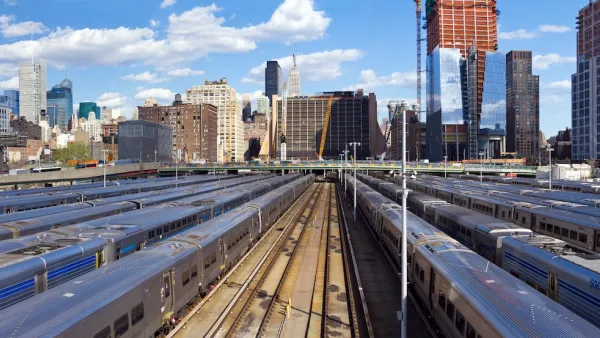The increasing recognition of waterfronts as a recreational and redevelopment asset belies its continued value for trade and industry. Will Doig makes the case for the oft-antagonized shipping industry in the tug-of-war over waterfront real estate.
Often described as a public asset, the waterfront has a way of captivating the public imagination, inviting frequent controversies over who gets to develop on it, and what.
Consider, for example, the case of two deep-water berths in Providence, Rhode Island that were sold to a metal recycling company late last year. The "battle [had] been raging in Providence for several years," Doig reports – "on one side, a developer who wanted to turn the shoreline into apartments, offices and hotels. On the other, the maritime industries that have been working there since the turn of last century." Shortly after industry won out, the complaints started rolling in: "Who put this big, ugly heap of metal on our lovely industrial port?"
Doig points out that the reality of waterfront industry stands sharply at odds with the imagined nostalgia of old-time working docks often invoked by many developers and "seen as a way to lure high-earning residents."
But while the shipping industry is soaring – "the container trade has doubled since 2000, and 2012 is expected to be another record-breaking year" – the benefit of booming real estate developments tends to be much shorter-lived. Take New Jersey's "Gold Coast," where in the 1980s, new residents lawyered the scrapyard and repair docks out of town, only for the real estate market to slump not too long thereafter.
Doig highlights a number of advantages that a working waterfront offers: high-paying, blue-collar jobs; environmentally cleaner shipping than trucks or trains; and a more diverse urban economy.
FULL STORY: On the waterfront, the battle rages on

National Parks Layoffs Will Cause Communities to Lose Billions
Thousands of essential park workers were laid off this week, just before the busy spring break season.

Retro-silient?: America’s First “Eco-burb,” The Woodlands Turns 50
A master-planned community north of Houston offers lessons on green infrastructure and resilient design, but falls short of its founder’s lofty affordability and walkability goals.

Delivering for America Plan Will Downgrade Mail Service in at Least 49.5 Percent of Zip Codes
Republican and Democrat lawmakers criticize the plan for its disproportionate negative impact on rural communities.

Test News Post 1
This is a summary

Test News Headline 46
Test for the image on the front page.

Balancing Bombs and Butterflies: How the National Guard Protects a Rare Species
The National Guard at Fort Indiantown Gap uses GIS technology and land management strategies to balance military training with conservation efforts, ensuring the survival of the rare eastern regal fritillary butterfly.
Urban Design for Planners 1: Software Tools
This six-course series explores essential urban design concepts using open source software and equips planners with the tools they need to participate fully in the urban design process.
Planning for Universal Design
Learn the tools for implementing Universal Design in planning regulations.
EMC Planning Group, Inc.
Planetizen
Planetizen
Mpact (formerly Rail~Volution)
Great Falls Development Authority, Inc.
HUDs Office of Policy Development and Research
NYU Wagner Graduate School of Public Service





























